The treatment of bedsores in bedridden patients is a difficult task, the solution of which requires enormous labor costs and a lot of time. Defects heal slowly, often suppurate. Necrotic sites may form on them. Deep bedsores form fistulas. The main problem that does not allow damage to heal quickly and easily is the fact that the patient continues to remain stationary. So, what do you need to know to restore tissue without surgery? How to treat pathology at home?
Material Content:
Treatment and prevention of bedsores in bedridden patients: general recommendations
Both treatment and prevention of pressure sores should be aimed at eliminating the factors that caused the disease. All possible measures should be taken to restore blood circulation in the affected areas.
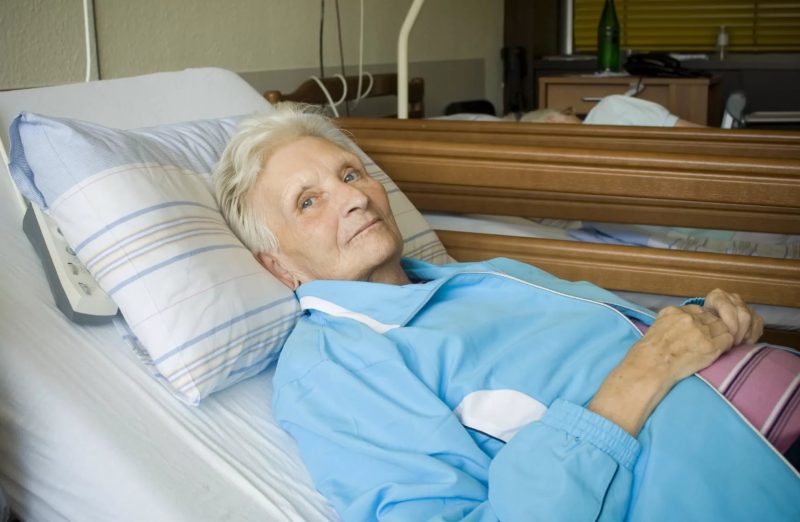
Preventive measures include:
- Changing the patient’s body position every 1.5-2 hours - this measure avoids prolonged squeezing of the same part of the body, which is the main cause of pressure sores. If at any site there are already signs of the initial stage of ulceration (red stain, maceration), the patient should not be placed in this zone.
- Protein-rich nutrition - Protein is the main building material of animal tissues. Its deficiency leads to disruption of many processes, including regenerative and immune.Affected tissues are not restored, resulting in pressure sores.
- Compliance with hygiene measures - skin constantly in a humid environment, soaks. Maceration occurs. To avoid this, it is necessary to wash the patient immediately after defecation or urination. Wipe the patient’s body several times a day, and with his excessive sweating.
Three fundamental principles have been given above, without which it is impossible to treat bedsores at home or to prevent them. However, this is not enough to recover from severe trophic disorders. In such situations, medications are used to stimulate regenerative processes and combat the joined infection.
How to treat bedsores in bedridden patients and the elderly at home
For the treatment of pressure sores in a bedridden patient, both traditional means (creams, ointments, drugs for systemic therapy), and some alternative recipes can be used. The best results can be achieved if, within a reasonable range, all available methods are combined.
Folk remedies for bedsores
Treatment of pressure sores with folk remedies is possible only at the initial stage of the disease, while there are no ulcers. In the future, similar techniques can only be used as auxiliary. The choice of method and evaluation of its effectiveness should be carried out by the local therapist who arrived at the call.
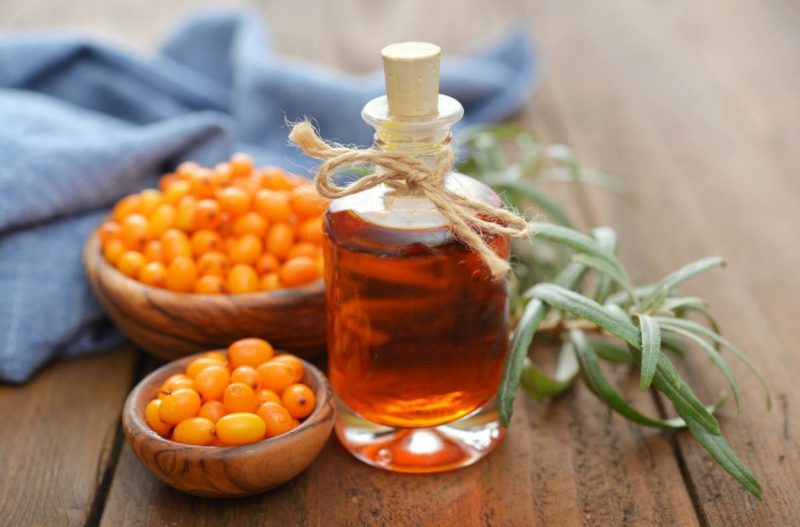
The most effective are the following folk recipes.
- Sea buckthorn oil is an excellent regenerating agent, however, without antiseptic properties. In the initial stages, bedsores can be used as the only treatment. For this, the surface of the focus is treated with the drug twice a day. With deep bedsores, tamponade is possible with napkins soaked in sea buckthorn oil. Dressing and replacement of napkins is made 1 time in 1-2 days. Oil is not suitable for the treatment of purulent processes.
- Infusion of oak bark - applied at the spot stage. To prepare the product, you need to take a tablespoon of raw materials, pour it with a glass (200-250 ml) of boiling water and insist for 2-3 hours. After the medicine is filtered, poured onto a sponge and rubbed with the bedsore during the general hygienic treatment of the body. The drug has a tanning effect, forms a tannin film on the surface of the wound, reduces the intensity of inflammation.
- Field chamomile infusion - is prepared and applied in the same way as a decoction of oak bark. It has a pronounced anti-inflammatory and antibacterial effect. Used to treat skin and wash wound surfaces. It can be used indefinitely, but the average frequency of treating a bedsore is 2 times per day.
Folk recipes do an excellent job with the initial stages of pressure sores. However, with advanced and purulent processes, preference should be given to traditional medicines.
Treatment of pressure sores with ointment
The use of ointments is usually resorted to with deep bedsores. The purpose of using this dosage form is to stimulate the regenerative capabilities of the body and fight against local infectious complications.
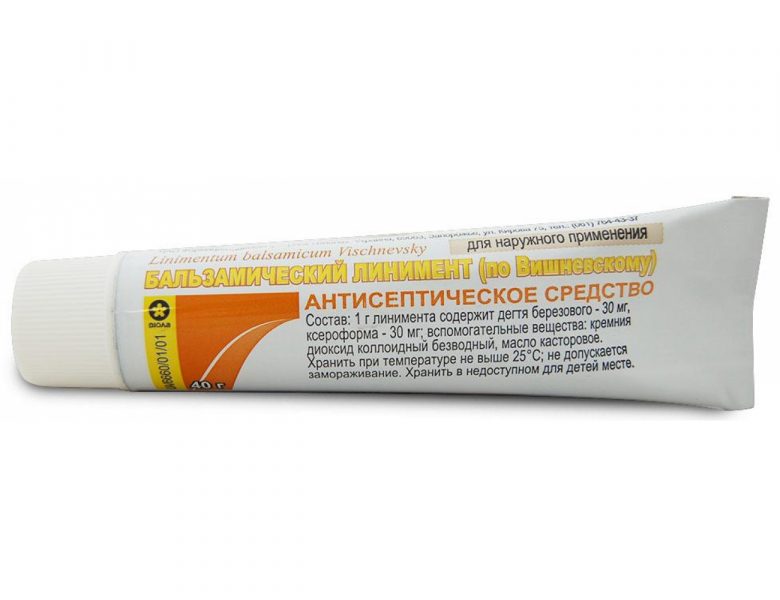
The following formulations are prescribed to patients:
- Vishnevsky ointment is a unique development of Soviet surgeons. It has a wide range of antimicrobial activity. It is used for the treatment and prevention of bacterial processes. In order to treat bedsores, it is applied to the wound surface 1-2 times a day. A gauze dressing is used to fix the ointment.
- Chloramphenicol is a drug based on chloramphenicol. It has a dehydrating and antimicrobial effect. It is applied to the bedsore 1 time per day. After application, the treated area is covered with a gauze napkin.
- Solcoseryl is a regenerative preparation based on extracts from calf blood. Stimulates recovery processes, improves blood microcirculation, is a source of vitamins and nutrients. Apply the ointment twice a day.After applying the medicine, the surface of the bedsore is covered with gauze.
The duration of the treatment with ointments is equal to the time required for the complete healing of the defect. However, if the drug does not improve the patient's condition, it is canceled, or combined with another group of agents (solcoseryl + levomikol).
Note: the drug of choice for purulent defects is levomycol. Liniment Vishnevsky, contrary to popular belief, to apply to purulent wounds is not recommended. It is more suitable for the prevention of infection.
Cream for diaper rash
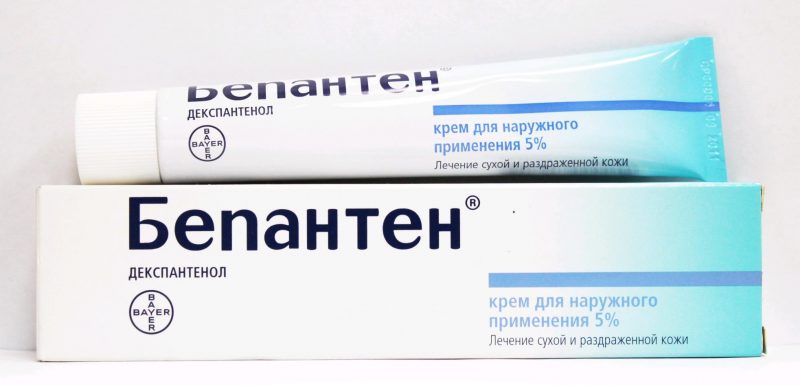
Diaper rash creams (desitin, weleda, bepanten) are mainly used to prevent pressure sores. They do not have a therapeutic effect, therefore it is pointless to apply such compositions to an existing defect. In order to prevent the cream, it is used during the washing of the patient, applying them to areas that are exposed to pressure, or stay wet for a long time. In this case, the skin is dried, maceration disappears, the turgor of the integument rises.
Medicine
The treatment of serious wounds is not without the use of systemic drugs. Pressure ulcers are no exception.
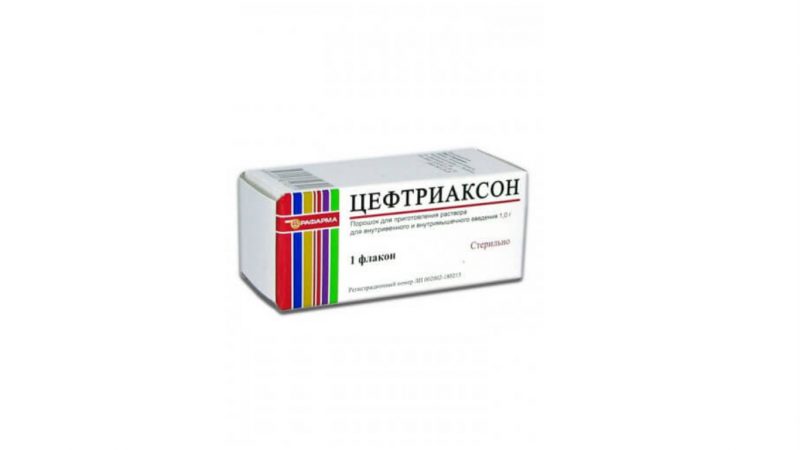
As prescribed by the doctor at home, the patient can take:
- microcirculation enhancers (trental, 1 pill twice a day);
- antithrombotic drugs (aspirin-cardio, 1 tablet at bedtime);
- antibiotics (Ceftriaxone in the form of a solution for injection, 1 gram 2 times a day IM);
- anti-inflammatory and painkillers (analgin 1 tablet 3 times a day).
The duration of treatment with each drug is determined by the doctor. As a rule, the patient takes antiplatelet agents and trental for life or until the bedsores are completely healed. Antibiotics are used for 7-10 days. Non-steroidal anti-inflammatory drugs should not be taken for longer than 2 months without a break.
It is interesting to know: in the form of a solution for injection, solcoseryl can also be used. Injections are combined with the use of ointment. The rejection of parenteral forms is made after the onset of epithelialization of the bedsore. The ointment is used until it is completely healed.
Features of the treatment of pressure sores
Trophic defects can occur in different parts of the body. The localization of the pathological focus depends on the position in which the patient is mainly located, as well as on the presence of vascular disorders (atherosclerosis). The treatment of pressure sores in different zones has its own characteristics.
Diaper rash under the mammary glands
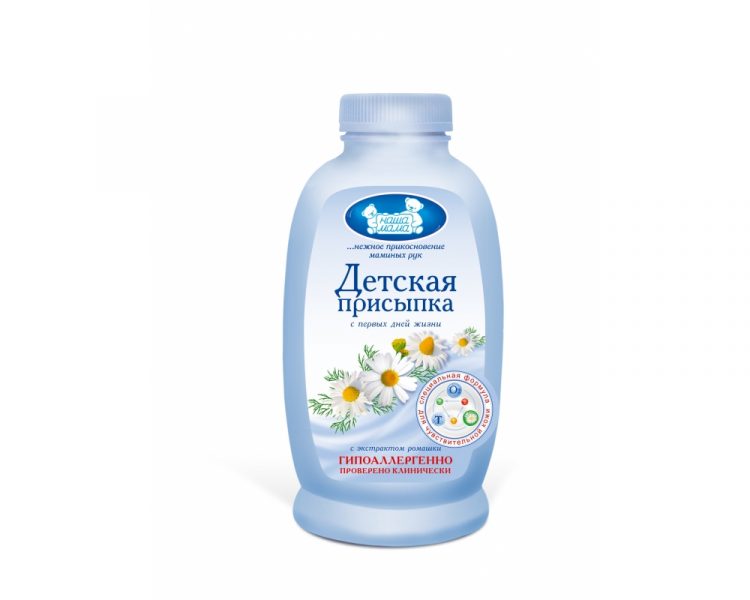
Diaper rash under the mammary glands rarely turn into deep bedsores. Therefore, they do not need drug therapy. Problem areas should be washed daily and sprinkled several (2-3) times a day with baby powder. This will avoid moisture and the appearance of maceration. It is also possible to use drying creams.
On the tailbone
The bedsores on the tailbone are usually the most voluminous. Here, tissue necrosis often occurs and wound pockets form. It is possible to prevent or delay such a neglected stage of pathology if special anti-decubitus circles are placed under the patient's coccyx.
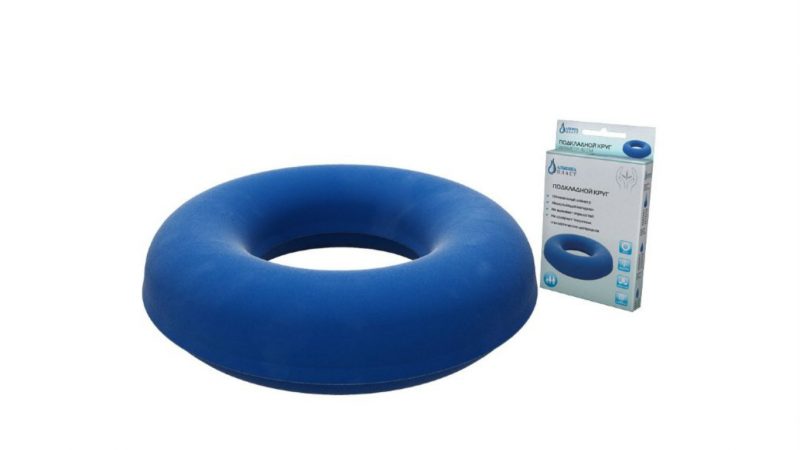
The device is a hollow circle of medium density material. The patient is laid on him so that the problem area is inside the circle. Periods of lying on the circle and without it should be alternated. This allows you to evenly distribute the time of tissue compression between different parts of the body.
On the heels
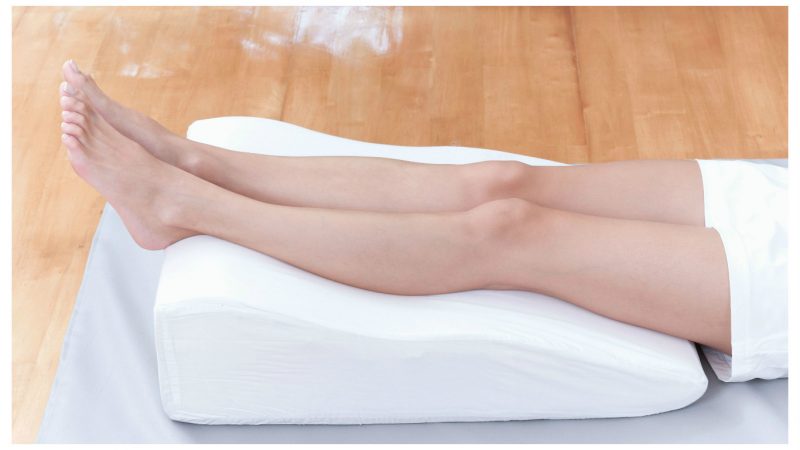
In order for the bedsores on the heels to heal successfully, they should be protected from contact with the bed. To do this, soft, wide rollers are placed under the patient's lower legs. This must be done in such a way that the heels remain on weight. Rolled sheets or duvet covers can be used as rollers.
In the groin
Ulcers and infected pressure ulcers in the groin area are extremely dangerous in terms of generalization of the infection. There are many blood vessels through which the pathogen is able to spread throughout the body.To prevent this and reduce the rate of development of trophic disorders, the legs of a lying patient should be laid so that the inguinal region is well ventilated. The optimal position is the “frog” - the human legs are bent at the knees and divorced to the sides.
Between the toes
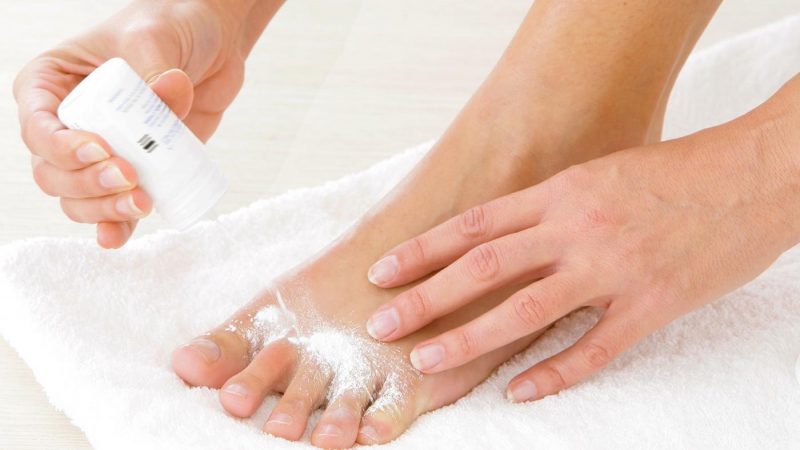
When bedsores between the fingers should follow the general rules of treatment - keep the feet clean, dry, and also do not allow the fingers to fit too tightly to each other. For this, hanks of bandage or small fabric rollers are inserted between them.
On the buttocks
Treatment of pressure sores on the buttocks at home requires the patient to stay on the sides and abdomen. Laying such people on their backs is prohibited, since such actions lead to an increase in the area and depth of the bedsore. As mentioned above, it is necessary to change the position of the patient every two hours.
How to prevent bedsores
Despite the claims of people who are far from practical medicine, it is almost impossible to prevent the formation of pressure sores in immobile patients. Sooner or later, trophic disorders appear in all. To postpone this moment, it is necessary to comply with all the above rules and examine the patient daily for maceration, persistent local hyperemia and other signs of damage.
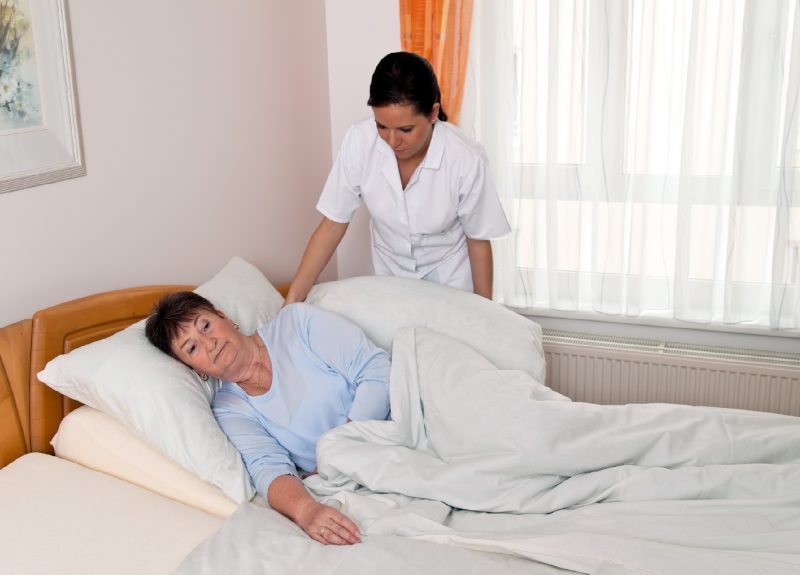
A prerequisite for avoiding the appearance of pressure sores is the early activation of patients after injuries and heavy operations. As a rule, defects do not develop even when the patient independently turns over from one side to the other and performs other active actions within the bed. Walking is not necessary.
Drinking and Nutrition Tips
The main rule in the formation of the diet for a patient with bedsores is a high protein content in food. Its amount should be 120-150 grams per day. About 60% of this amount of protein is taken from animal sources (boiled grated meat, fish, meat broths). In case of insufficient intake of protein molecules from ordinary food, therapeutic nutrition should be used - nutrisonprotison 1000-1500 ml per day (80 grams of protein / liter), nutrison energy in the same amount (60 grams of protein / liter), nutridrink (7 grams of protein / 100 ml )

The treatment of pressure sores is a complex and complex task that requires carers to have great patience and professional skills close to the level of a qualified nurse. In the format of one article it is impossible to talk about all the intricacies of decubitus therapy (the use of special mattresses, necrectomy, the use of various drugs, depending on the stage of healing, etc.). To help a bedridden patient, it is necessary to constantly improve their skills, study specialized sources, learn about new methods of treatment and, of course, develop their own experience based on the results of the work done.












